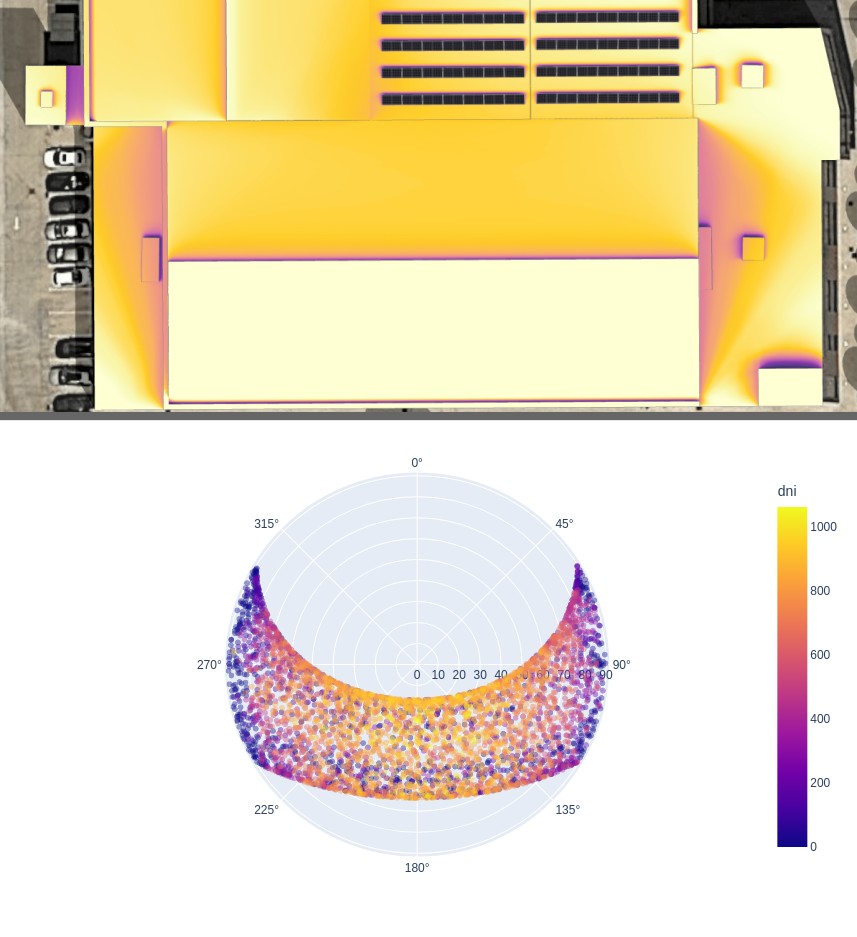What is insolation and how is it calculated in photovoltaics?
⛱️ "Stay in the shade for a while, you're going to get a sunstroke!" In reality, the concept is well understood to refer to prolonged exposure (over time) to the electromagnetic radiation from the Sun.
We can calculate the annual solar insolation at a specific point (with a specific orientation) by taking into account the irradiance from the infinite positions of the sun throughout the year. In other words, if we solve the mathematical integral.
🔎 In photovoltaics, we are accustomed to using hourly data for calculations and simulations. This means that to calculate the insolation received at each point, we have to calculate the insolation for each of the thousands of possible hours (each with a different average irradiance) and sum them up.
However, in a photovoltaic system, solar insolation varies at each point within the same system due to the orientation of the different surfaces and the influence of obstacles and the horizon that can block direct irradiance by casting shadows.
It is a complex calculation, so it is usually assumed that the solar insolation is the same for the strings that share orientation within the same photovoltaic system, but...
Do you know what actually happens when local shadows occur? 🤯
If you want to know more look at Insolation maps. 😜
⬇️ PS: In the image, you can see an example with the different positions of the Sun throughout the year and the irradiance for each of them. ⬇️
